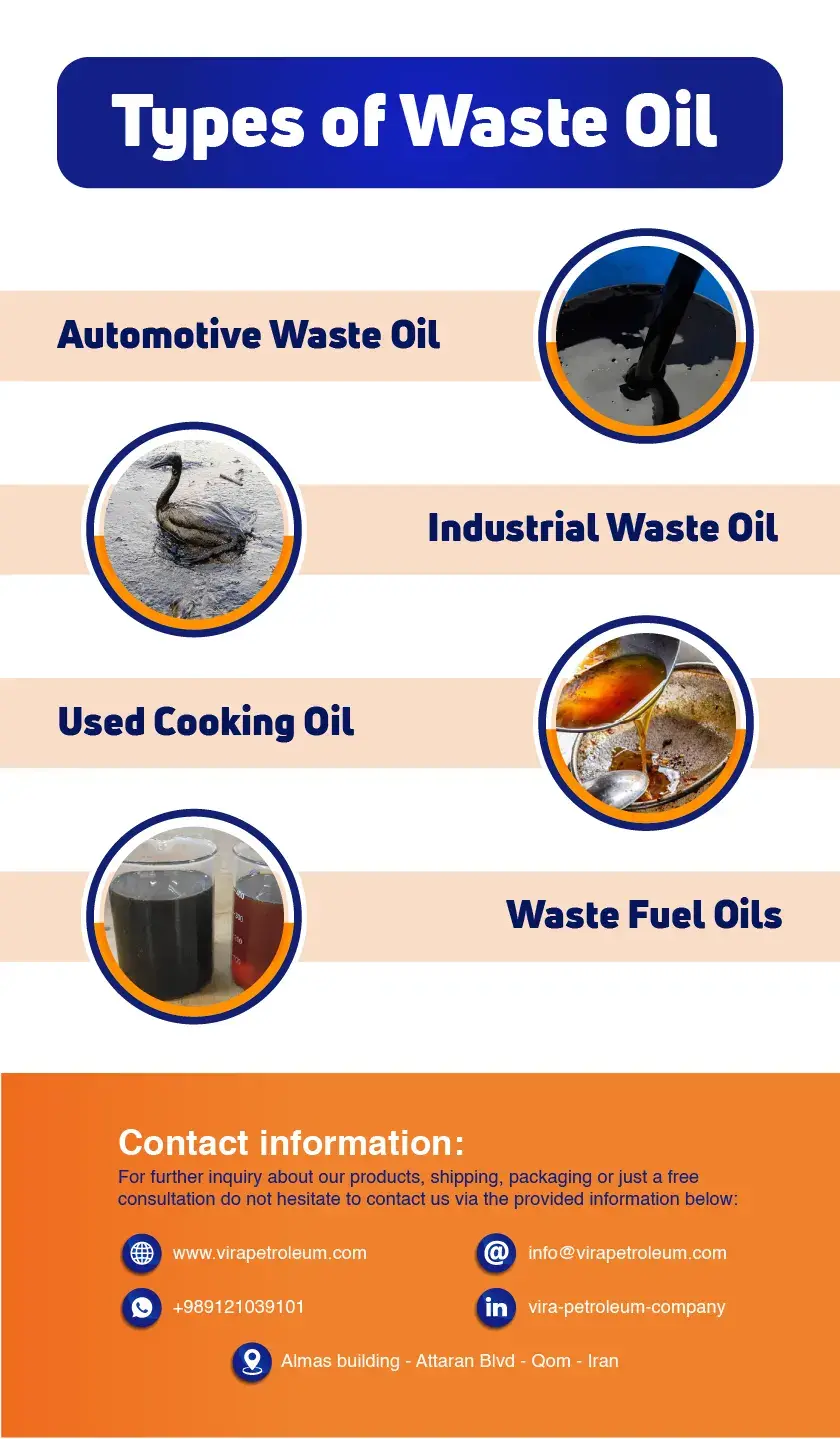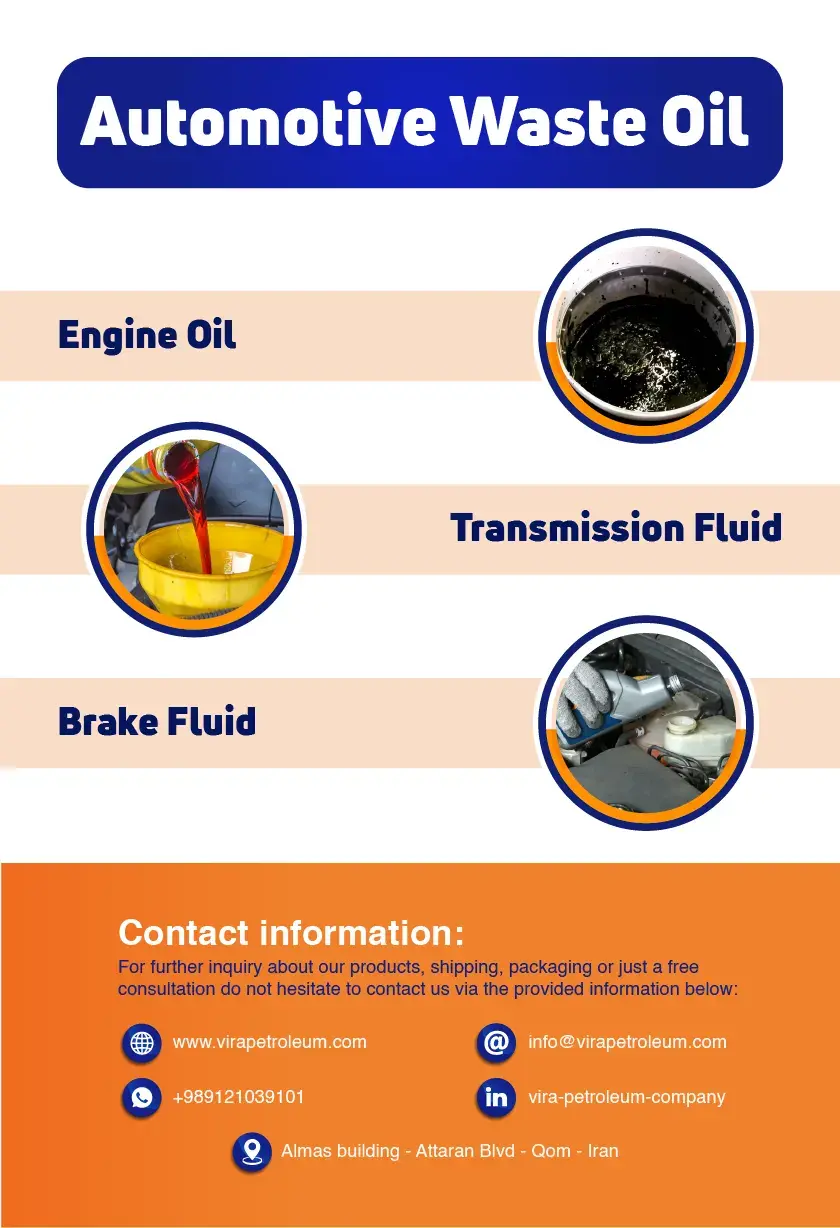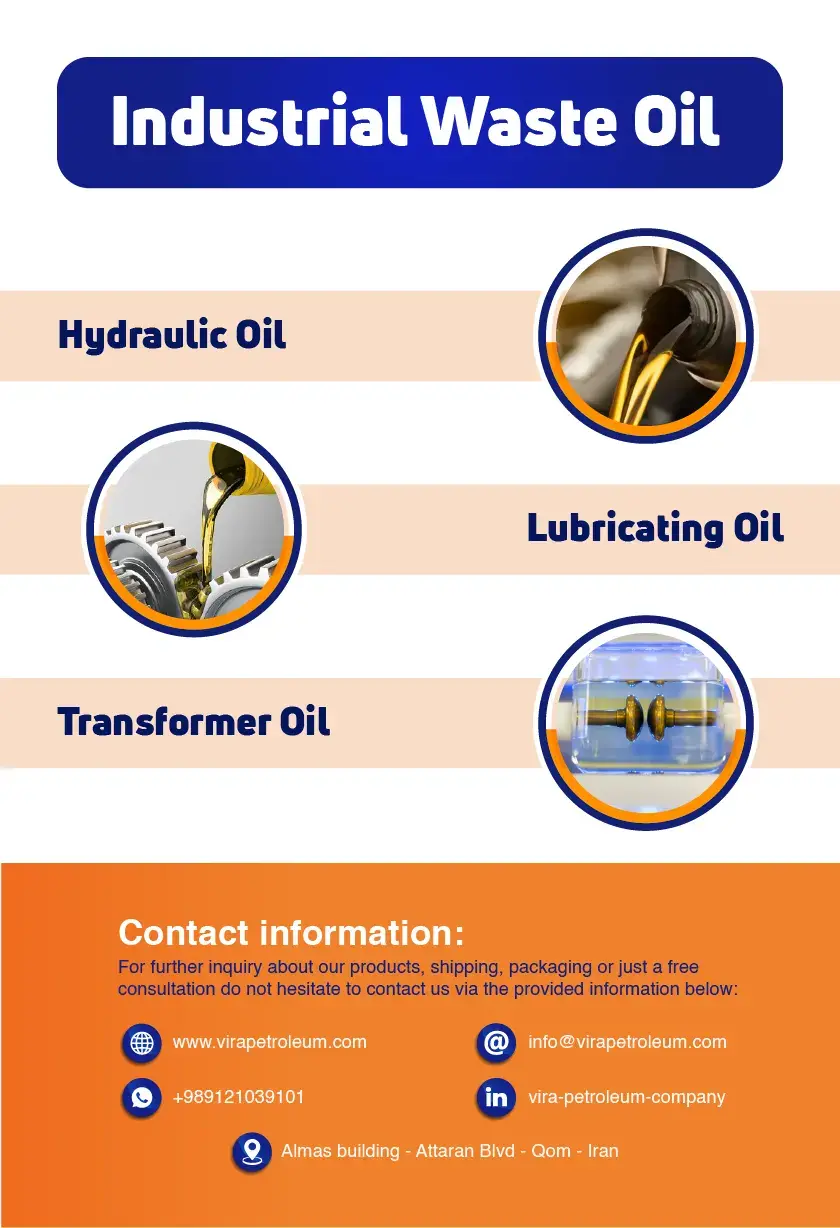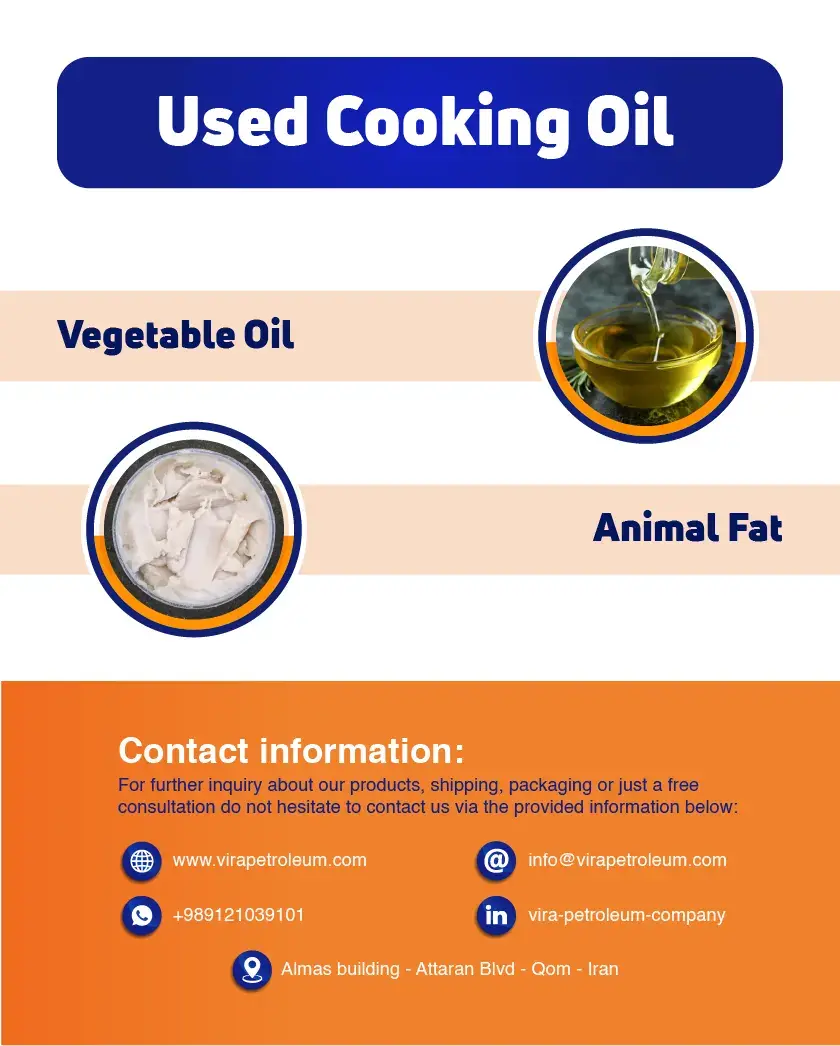Waste oil, derived from a variety of sources, poses significant environmental challenges if not managed properly. Understanding the different types of waste oil is crucial for effective waste management and exploring sustainable recycling options. This article serves as a comprehensive guide, discussing the characteristics of each type of waste oil, their environmental impact, and available recycling methods.
Order : recycle base oil


Automotive Waste Oil: (Used Lubricant & Motor Oil)
Used lubricant and motor oil are commonly generated by automobiles and other vehicles to reduce friction in machinery. They can be synthetic or mineral-based, containing additives, chemicals, and impurities that make them more challenging to recycle compared to other waste oils.
a. Engine Oil:
Engine oil waste is generated during routine oil changes in vehicles. It contains contaminants such as heavy metals, fuel residues, and combustion by-products, making it hazardous if not handled appropriately.
b. Transmission Fluid:
Transmission fluid is utilized in automatic and manual transmissions to lubricate and cool moving parts. When replaced, it becomes waste oil, containing additives and contaminants that require proper disposal.
c. Brake Fluid:
Brake fluid, essential for hydraulic braking systems, degrades over time and must be replaced. It contains glycol-based or mineral oil-based compounds, requiring careful handling and disposal.
Read more : A Practical Guide to Lubricant Additives

Industrial Waste Oil:
a. Hydraulic Oil:
Hydraulic oil is widely used in hydraulic systems for power transfer. It can be synthetic or mineral-based, exhibiting high viscosity and often containing contaminants such as water and particulate matter. Due to its significance in numerous industries, hydraulic oil is frequently recycled or re-refined.
b. Lubricating Oil:
Industrial machinery, such as pumps and compressors, often uses lubricating oil for smooth operation. Once it reaches the end of its service life, it becomes waste oil and needs proper management.
c. Transformer Oil:
Transformer oil is utilized in electrical transformers for cooling and insulation purposes. Over time, it degrades, acquiring impurities and rendering it unsuitable for further use.

Used Cooking Oil:
Cooking oil, primarily used in food processing industries and households, is another form of waste oil that can be recycled. Similar to lubricant oils, cooking oils can be synthetic or mineral-based, with varying additives and impurities that pose challenges in the recycling process.
a. Vegetable Oil:
Waste vegetable oil is generated from cooking processes in homes, restaurants, and food processing industries. It is often contaminated with food particles, water, and other substances, making it necessary to handle and dispose of properly.
b. Animal Fat:
Animal fat waste is produced during meat processing or rendering processes. It contains organic impurities and may require specialized treatment for safe disposal.
Waste Fuel Oils:
Waste fuel oils encompass mineral or synthetic oils that can no longer perform their intended functions due to contamination. Examples include sludge, petrol, kerosene, diesel, and heating oil. These oils find applications as energy sources in transportation, heating, and electricity generation.
- Waste fuel oils include various oils that can no longer perform their intended functions due to contamination.
- Types of waste fuel oils include sludge, petrol, kerosene, diesel, and heating oil. Proper disposal and recycling methods are necessary to minimize environmental impact.
Read more : How to make diesel fuel from used motor oil?
Characteristics of Waste Fuel Oils:
Sludge:
Sludge oil is a byproduct of various industrial processes and can contain a mixture of oils, solid particles, and water.
Petrol:
Waste petrol is typically derived from expired or low-quality gasoline and is often contaminated with impurities.
Kerosene:
Waste kerosene is generated from expired or contaminated kerosene fuel and requires proper handling and disposal due to its potential environmental impact.
Diesel:
Waste diesel oil includes discarded or contaminated diesel fuel that can be reprocessed for various applications, including conversion into usable diesel fuel.
Heating Oil:
Waste heating oil, commonly used for heating purposes, is subject to contamination and requires appropriate disposal methods.
different types of waste oil and their characteristics:
| Type of Waste Oil | Characteristics |
| Used Lubricant and Motor Oil | – Synthetic or mineral-based |
| – Contains additives, chemicals, and impurities | |
| – Common contaminants: heavy metals, fuel residues, and combustion by-products | |
| Hydraulic Oil | – Synthetic or mineral-based |
| – High viscosity | |
| – Accumulates contaminants like water and particulate matter | |
| Cooking Oil | – Vegetable-based or animal fat-based |
| – Contamination with food particles, water, and other substances | |
| Waste Fuel Oils | – Includes sludge, petrol, kerosene, diesel, and heating oil |
| – Contaminated and can no longer perform their intended functions |
Recycling and Conversion:
Recycling waste oil, including the types mentioned above, plays a vital role in waste management and sustainability efforts. Waste oil can be recycled through processes such as re-refining, where impurities are removed, and the oil is restored for reuse. Additionally, waste oil can be converted into diesel fuel through processes like pyrolysis or fractional distillation, providing a valuable alternative to traditional diesel derived from crude oil.
Read more : The Art of Waste Oil Management
1) Re-Refining:
- Re-refining involves removing impurities, additives, and contaminants from waste oil to restore its quality. The refined oil can be reused as base oil or blended with new lubricants.
2) Distillation:
- Distillation is a process that separates different components of waste oil based on their boiling points. It allows for the recovery of valuable fuels such as diesel or gasoline.
3) Pyrolysis:
- Pyrolysis involves heating waste oil in the absence of oxygen to break down the hydrocarbon chains and produce gases, liquids, and solids. The resulting products can be further processed into fuels or other valuable materials.
4) Biofuel Production:
- Waste cooking oil and some types of waste fuel oils can be converted into biodiesel through transesterification, providing a renewable and environmentally friendly fuel alternative.
Conclusion:
Understanding the different types of waste oil is essential for effective waste management and the exploration of sustainable fuel options. From used lubricant and motor oil to hydraulic oil, cooking oil, and waste fuel oils, each type has distinctive characteristics and potential for recycling and conversion into diesel fuel. Proper waste oil management and conversion processes contribute to environmental preservation and the development of a greener future.
